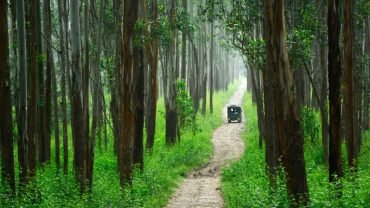Kudremukh, often dubbed as one of Karnataka’s most stunning trekking destinations, offers a mix of lush green hills, diverse flora and fauna, and breathtaking views. Nestled in the Western Ghats, this trek is ideal for nature enthusiasts and adventure seekers alike. However, to ensure a safe and enjoyable experience, packing the right trekking essentials is crucial. In this comprehensive guide, we’ll walk you through everything you need to bring along for the Kudremukh trek, covering all the trekking essentials to make your adventure smooth and memorable.
Understanding the Kudremukh Trek
Before we delve into packing essentials, let’s briefly explore what makes the Kudremukh trek special.
Scenic Beauty and Biodiversity
Kudremukh translates to “horse face,” a name derived from the unique shape of the mountain. The trek spans around 20 kilometers and takes approximately 6-8 hours to complete, depending on your pace. Along the way, trekkers are treated to a rich tapestry of dense forests, rolling hills, and meadows filled with vibrant wildflowers. Wildlife enthusiasts might even spot exotic birds and elusive mammals, making this trek a paradise for nature lovers and a perfect opportunity to experience essential trekking essentials for a successful adventure.
Weather Conditions
Kudremukh is located at a high altitude, which means weather can be unpredictable. While the region experiences a pleasant climate from October to February, it can also be quite chilly, especially at night. The monsoon season (June to September) brings heavy rainfall, making the trails slippery and often muddy. Therefore, packing appropriately is crucial for your comfort and safety.
Must-Have Items for the Kudremukh Trek
1. Footwear
Choosing the right footwear is perhaps the most important decision you’ll make for the trek.
- Trekking Shoes: Invest in sturdy, waterproof trekking shoes with good grip. Look for shoes that provide ankle support to help prevent injuries on uneven terrain.
- Thick Socks: Wool or synthetic socks will help keep your feet warm and dry. Avoid cotton socks as they can retain moisture and lead to blisters.
2. Clothing
Your clothing should be suitable for a range of weather conditions, as temperatures can vary significantly.
- Base Layer: Start with moisture-wicking base layers that help keep sweat away from your skin.
- Insulating Layer: A lightweight fleece or down jacket is essential for warmth during the cooler parts of the trek.
- Outer Layer: A waterproof and breathable rain jacket will keep you dry in case of unexpected showers.
- Trekking Pants: Opt for lightweight, quick-drying trekking pants. Avoid jeans as they can be uncomfortable and take a long time to dry.
- Hat and Gloves: If you’re trekking during the colder months, a warm hat and gloves will keep you comfortable.
3. Backpack
A comfortable, durable backpack is essential for carrying all your gear.
- Daypack: A 30-50 liter backpack is usually sufficient for a day trek. Ensure it has padded straps and a hip belt for added comfort.
- Rain Cover: Make sure your backpack comes with a rain cover or purchase one separately to keep your belongings dry in case of rain.
4. Hydration
Staying hydrated is vital for maintaining energy levels during the trek.
- Water Bottles: Carry at least 2-3 liters of water. Consider using insulated water bottles to keep your water cool.
- Hydration Pack: If you prefer, a hydration bladder can be an excellent option for hands-free sipping.
Explore More: kodachadri trek | Bandaje falls trek | Chardham yatra | kunti betta trek
5. Nutrition
Proper nutrition will fuel your trek and keep your energy levels high.
- Snacks: Pack energy-dense snacks like nuts, granola bars, dried fruits, or chocolate. These are easy to carry and provide quick energy boosts.
- Lunch: If you plan to take a break during the trek, pack a lightweight, non-perishable lunch like a sandwich or wraps.
6. Navigation Tools
While the Kudremukh trek is well-marked, having navigation tools can be beneficial, especially in case you stray off the path.
- Map and Compass: Familiarize yourself with the trek route and carry a map and compass, or download offline maps on your phone.
- GPS Device: A handheld GPS device or a trekking app on your smartphone can help track your route.
7. First Aid Kit
Accidents can happen, so it’s wise to be prepared.
- Basic Supplies: Include adhesive bandages, antiseptic wipes, gauze pads, pain relievers, and any personal medications.
- Insect Repellent: This is crucial to protect against insect bites, especially in forested areas.
8. Camping Gear (if staying overnight)
If you plan to extend your adventure and camp at Kudremukh, consider adding the following items to your pack:
- Tent: A lightweight, waterproof tent that is easy to set up.
- Sleeping Bag: Choose a sleeping bag rated for colder temperatures to ensure warmth at night.
- Sleeping Pad: A sleeping pad will provide cushioning and insulation from the cold ground.
9. Lighting and Tools
Being well-equipped can help you handle unexpected situations.
- Headlamp/Flashlight: A reliable headlamp or flashlight is essential for trekking in the early morning or late evening.
- Multi-tool: A multi-tool can come in handy for various tasks, from food preparation to equipment repairs.
10. Personal Items
Don’t forget to pack a few personal items to make your trek more comfortable.
- Sunscreen: Protect your skin from UV rays, especially if you’re trekking at higher altitudes.
- Sunglasses: Invest in a good pair of sunglasses with UV protection.
- Trekking Poles: These can provide stability and reduce strain on your knees, especially during steep ascents and descents.
11. Emergency Supplies
It’s always good to be prepared for emergencies.
- Whistle: A whistle can be a lifesaver in case you need to alert others for help.
- Emergency Blanket: These lightweight, compact blankets can provide warmth in case of an unexpected chill or emergency.
Tips for Packing
- Pack Light: While it’s tempting to bring everything, aim to pack only what you need. Every extra item adds weight and can make your trek uncomfortable.
- Organize Your Pack: Use packing cubes or zip-lock bags to keep your items organized. This will make it easier to find what you need without rummaging through your bag.
- Check the Weather: Before you finalize your packing list, check the weather forecast for Kudremukh. Adjust your clothing and gear accordingly.
- Test Your Gear: If you’re using new gear, such as shoes or a backpack, consider taking them on a shorter hike before your trip. This helps ensure everything is comfortable and functional.
Conclusion
Packing for the Kudremukh trek is an essential part of ensuring a successful and enjoyable adventure. By carefully selecting your gear and being well-prepared with the right trekking essentials, you’ll be able to focus on the breathtaking beauty of the landscape, the thrill of the trek, and the joy of conquering this stunning trail. Remember, preparation is the key to a memorable trekking experience, so don’t overlook the trekking essentials. Get ready to immerse yourself in nature, challenge yourself, and create lasting memories on the magnificent trails of Kudremukh! Happy trekking!



Comment (0)